Often, trout identification can be difficult for anglers. Many anglers get mixed up between brook trout vs brown trout. But once you know the differences, and catch some of each species on your own, it becomes much easier. I hope these 4 identifiers I present here will help you to determine the type of trout you are catching.
Quick Answer:
The best way to tell the difference between a brook trout and a brown trout is by their colors and patterns. On brook trout you should see red spots with blue halos. While on brown trout you may see some red spots, but without the blue halos. Another major difference is the red to black to white fins on brook trout.
4 Differences Between Brook Trout and Brown Trout
1. Colors
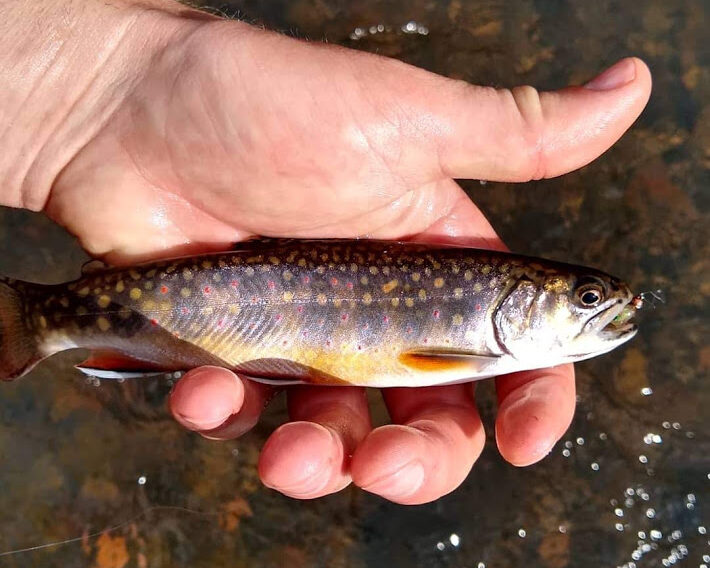
The easiest way to tell a brook trout from a brown trout is by the colors. Brook trout all have a belly that is a shade of red or orange. And the fins on the underside of it’s body have a very clear white edge, followed by a black line, and the rest is a shade of red.
Even the smallest of brook trout will have this coloration. The only exception is coaster brook trout in the great lakes region who are more silver overall.
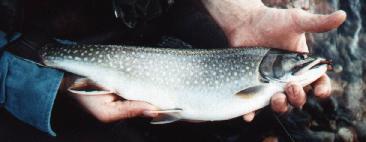
Above, is a picture of a coaster brook trout from the Wisconsin Department of Natural Resources website. And here is a link to an interesting article on their site about coaster brook trout.
Some Brown trout will also have a white leading edge on their fins such as this one pictured below.
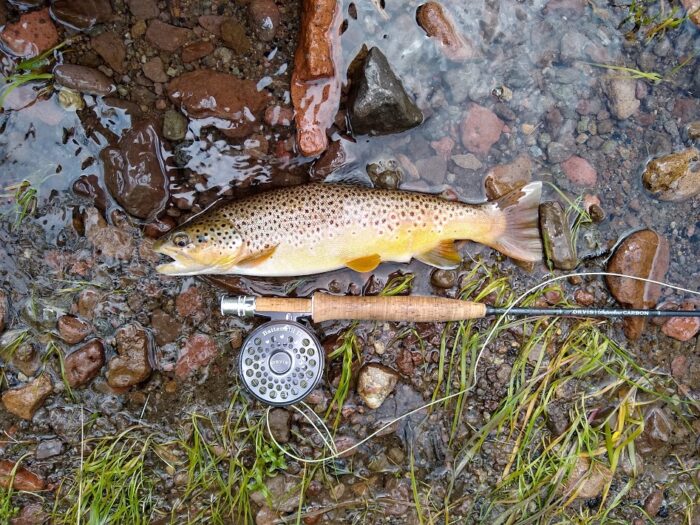
However, There is no black line following the white, and the rest of the fin is a burnt yellow color.
2. Patterns
Going off patterns such as spots can be a slightly more difficult way to determine a brook trout vs a brown trout, but it still works.
The majority of brook trout will have some red spots with bluish circles around them. As well as yellow spots over darker colors.
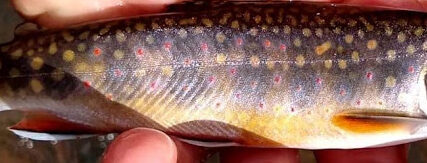
Brown trout on the other hand will have mostly black spots with only a few red spots below the lateral line.

3. Big Mouths And Small Mouths
The features of the fish can be another means of identification, although it’s far from the easiest. Even many trout of the same species can have slightly different features.
I have caught a lot of brook trout and brown trout in Eastern Idaho, And I’m not an expert, but from my own observation, the brown trout have a smaller mouth than brook trout.
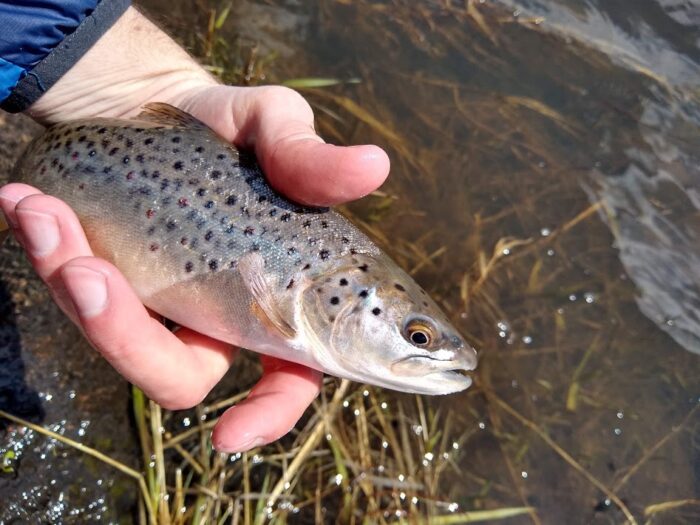
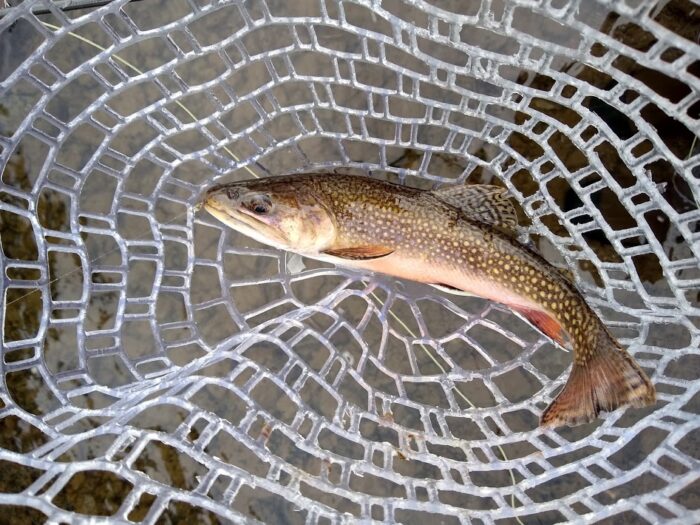
4. Differences in Habitat of Brook Trout VS Brown Trout
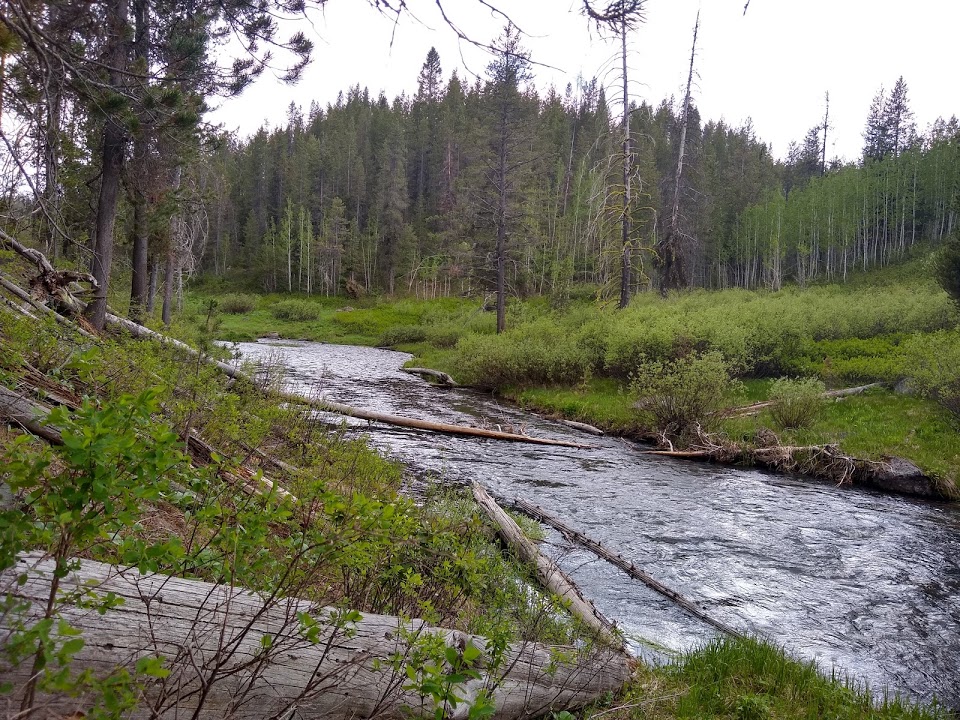
Deciding what type of fish you caught based on location alone is a rather poor technique, but it can give you hints. Best of all it will help you find the fish you want to target.
Geographic Locations
The distribution of brook trout and brown trout are very similar across the US. However I usually catch them in different streams. I have fished streams packed with brook trout, then just 3 miles away on another river caught brown trout.
In my experience it has to do with a streams size more than anything. Brook trout seem to prefer small streams. All the brook trout I caught in Idaho were in streams less than 20 feet wide. While the brown trout were usually in streams wider than 20 feet.
Of course there are exceptions, but if you are targeting brook trout, start with the smallest of streams aka brooks. Makes sense right?
Water Temperatures
Brook trout need very cold water where as brown trout can stand slightly warmer. All trout need oxygen rich water to survive and warmer water means less oxygen.
Optimal water temperatures for brook trout are between just above freezing and 65 degrees. Any higher and the fish will become stressed. If temperatures reach 70 degrees, the fish will begin to die off.
Brown trout also prefer cold water, but they can still survive at 70 degrees, and will start dying off if the water stays above 75 degrees for a while.
Water Quality
Clean water is important for all trout and especially for brook trout. Brook trout are more susceptible to pollution and muddy water. Habitat can be ruined by logging operations, road construction, and farming.
It’s best to fish for brook trout in areas far from human influence. The best brook trout streams are found after putting in some work, whether that means hiking deep into the mountains, or exploring more remote areas.
Conclusion
The easiest way to tell a brook trout from a brown trout is the white, black, and red fin near the tail, and red spots with bluish halos.
One More Bonus Fact…
Brown Trout are More Aggressive
Although knowing that brown trout are more aggressive than brook trout won’t help you to tell them apart, it can help you to target one over the other.
Brook trout and brown trout don’t get along very well. Brown trout are more aggressive and will compete against brook trout for feeding spots.
Brown trout are often targeted with larger lures and streamers. Many fly fishermen will tie large 6 inch streamers or even mice when targeting big brown trout. But when targeting brook trout you are often better off with smaller presentations.
If you would like to learn more about trout fishing, check out these pages on how to catch trout, best hooks for trout fishing, and how to find trout fishing near you!
Video
Here is a very in depth video I came across on the The New Fly Fisher YouTube channel. Even if you aren’t a fly fisher, this can help you to better understand brook trout and therefore catch more!
